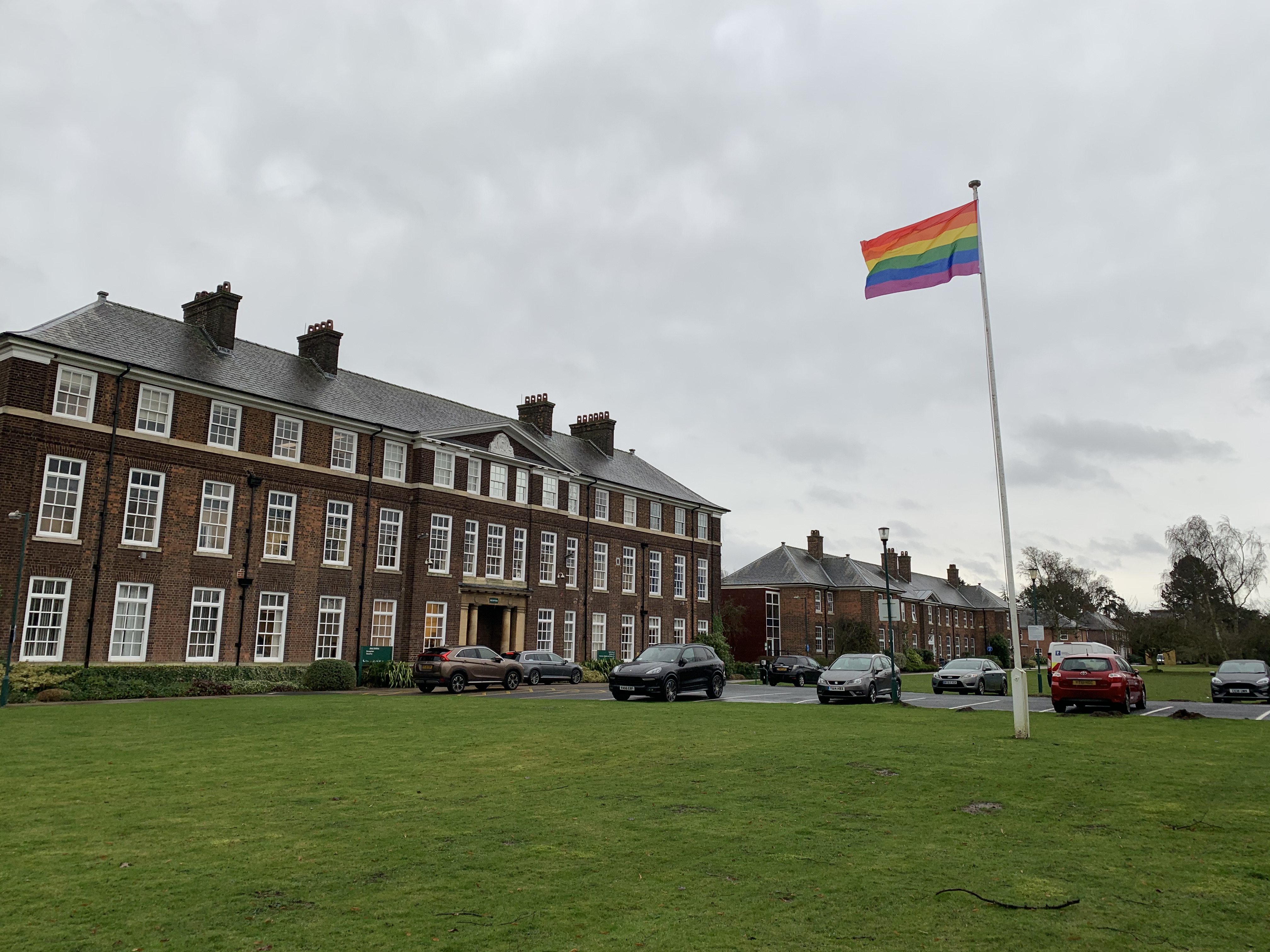
February 3, 2020, by Sean May
So – What’s with all the rainbows on campus?
Everybody loves rainbows right?
Many of us have multiple photos of rainbows in our real or virtual photo albums (probably alongside a few sunsets and some empty beaches). Rainbows are quite literally the most colourful things that we can see – and have been a symbol for hope, optimism, change and connectivity throughout history.
Almost all cultures incorporate rainbows in their core mythologies, often as ‘sky dragons’ – from the Rainbow Serpent stories throughout indigenous Australia, to various types of colourful Hong (虹) described across China. They represent a message of security and forgiveness within the shared story of Noah from all three Abrahamic faiths (Judaism, Christianity and Islam); they point to the elusive leprechaun‘s pot’o’gold treasure in Ireland; and underpin Bifröst – the bridge to the gods from both ancient and current Norse mythology.
The biologists amongst us may be interested to know that Iris, the Greek Goddess of the rainbow, gave her name to the many coloured plant genus as well as the coloured tissues of our eyes, and this science theme extends to the element iridium (with its many coloured salts). Those of you who are parents will know the (sadly out of sequence) nursery song “I can sing a rainbow“, and those older people who grew up with UK TV may well remember the Rainbow theme tune with some fondness.
Rainbows have clearly had a significant impact in all sorts of cultural media – and they are pretty – right?.
So – why do we have Rainbow Flags, Lanyards and (soon to come) Rainbow Roads, and Rainbow Laces on our campus?

Rainbow Networking
Rainbow flags and many other rainbow decorations throughout popular culture are now strongly linked with the LGBT+ Movement. In addition they are increasingly used as general expressions of support for diversity and inclusivity.
The history and origin of the Rainbow Flag as a symbol for LGBT+ representation is not entirely clear and may partly have been a convergence of several ideas in the community at the time. A few commentators point to a Wizard of Oz influence via Judy Garland, but all agree that the multiple lines of colour represent different ideas and constituent parts of the community.
The very first official rainbow gay pride flag created by Gilbert Baker was flown in San Francisco at the Gay Freedom Day Parade on June 25th 1978.
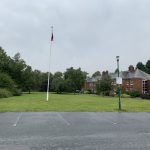
Pride 2019 – rainy June
The current version of the flag has fewer stripes partly due to difficulties in reproducing some early dye choices, and now presents six colours in total: Red, Orange, Yellow, Green, Blue, and Violet.
Biosciences flew a rainbow flag on the campus front lawn during a very wet Pride last Summer. You may however have noticed a much bigger flag flying there this week [see above], and for the whole of LGBT History Month (February). At the South end of campus you can also see a rainbow flag flying outside the Vet School – visible all the way to The Barn.
Rainbow Lanyards
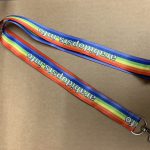
Rainbow Lanyards
These are available from the EDI committee or at LGBT History Month EDI events.
We handed out nearly 100 rainbow lanyards at the Xmas meal photo shoot for our Be Your Self poster (coming shortly) and more at the Valentine’s Day LGBT History Month talk:
Dr Max Biddulph, Chair of the LGBTQ Staff Network, 12:30 Friday 14th February:
“What makes for an inclusive Higher Education space? A conversation for LGBT History Month.”
Food Sciences Lecture Theatre.
****Recording of this event now available here****
Rainbow Laces
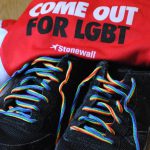
These are promoted by the Stonewall Charity which is a UK lobbying group founded in 1989 to campaign for equality and awareness for lesbian, gay and bi people in a range of areas, incorporating alignment with trans individuals since 2015.
We will be providing these for SB campus sports teams in the near future as part of our commitment to encourage inclusivity across all aspects of campus life.
Stonewall takes its name from the New York Mafia gay bar that was the nucleus of riots in 1969 protesting against a police raid, initiated by a mixture of street youth and the early protagonists of the gay rights movement. One year later, Pride was born as a commemoration event for Stonewall and the first marches took place across the USA. A recent film Stonewall (currently streaming free on Rakuten and available on Amazon Prime) portrays these LGBT+ history events and has received generally positive reviews from individuals that were present and involved. (Some commentators even suggest Judy Garland’s death as one additional trigger for the riots and this idea is included in the film).
Rainbow Roads
These have been a ‘thing’ in several countries for at least a couple of years. Some of you may have seen the rainbow crossings in Hockley, Nottingham (downhill from the Lace Market Tram Stop) – that were painted in place last autumn during Pride and are there today.
Rainbow Roads (not the Mario kind) have now arrived at a campus near you.
The rainbow in this road incorporates the brown and black lines that acknowledge additional problems and issues of exclusion that Black Asian and Minority Ethnic (BAME) members of the LGBT+ community face.
Although this addition has faced some criticism that the rainbow alone is inclusive enough, using the black/brown stripes encourages conversation around the issues of race, racism, and marginalisation of minority communities. Awareness itself has historically been the backbone and chief motivator for inclusivity and change.
To hear more, come to one of the:
Rainbow Road Openings
Sam Hawkins (UoNSU LGBT+ Officer) opened the Rainbow Roads, his campaign for LGBT+ visibility and representation across the various campuses at the University of Nottingham.
05/02 Portland Building, University Park campus
12/02 Xu Yafen Building, Jubilee campus
19/02 The Barn, Sutton Bonington campus
No comments yet, fill out a comment to be the first

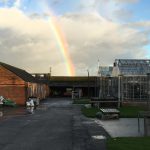
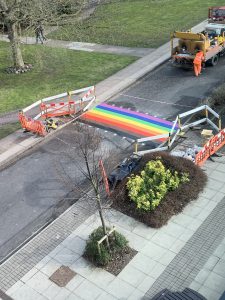
Leave a Reply